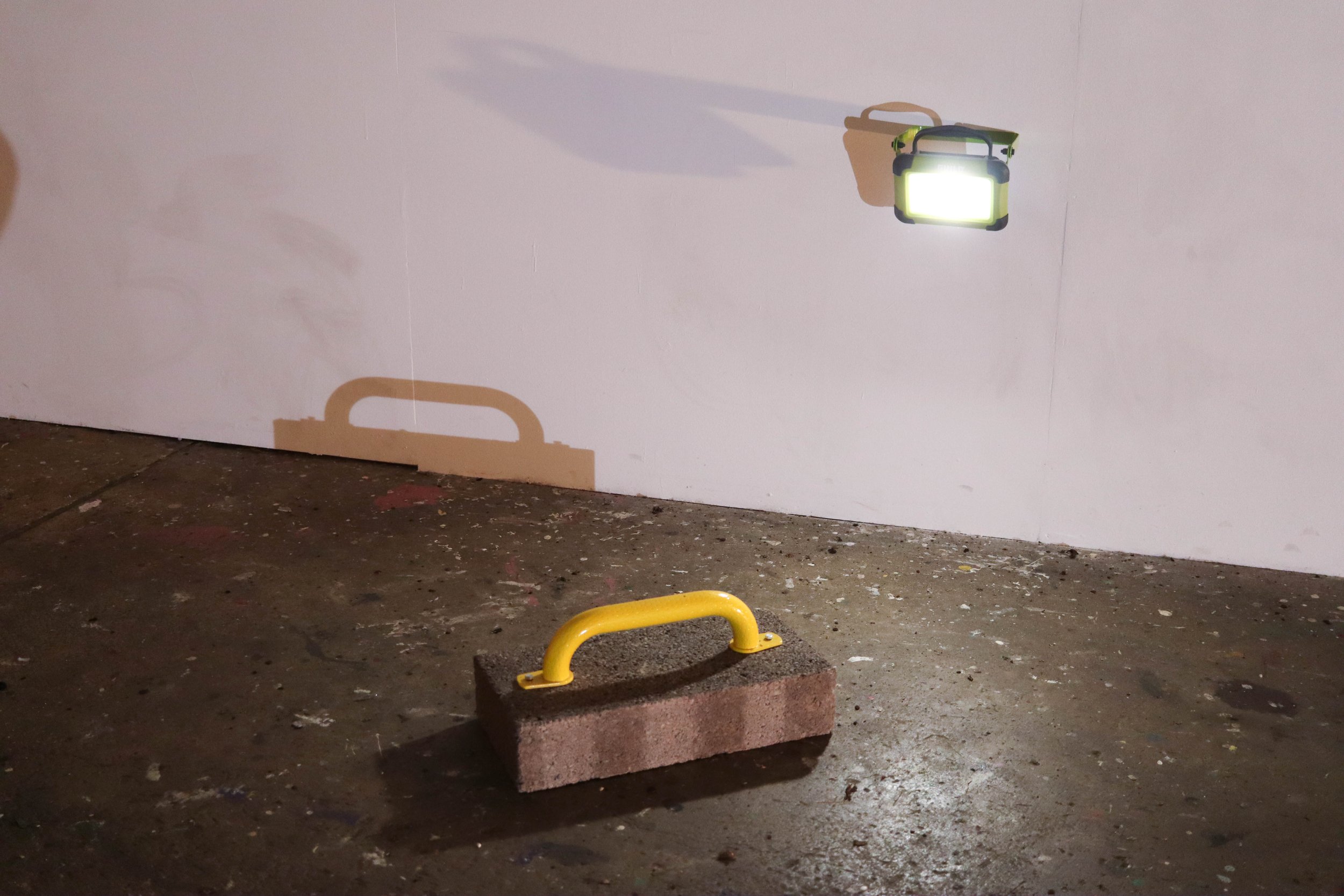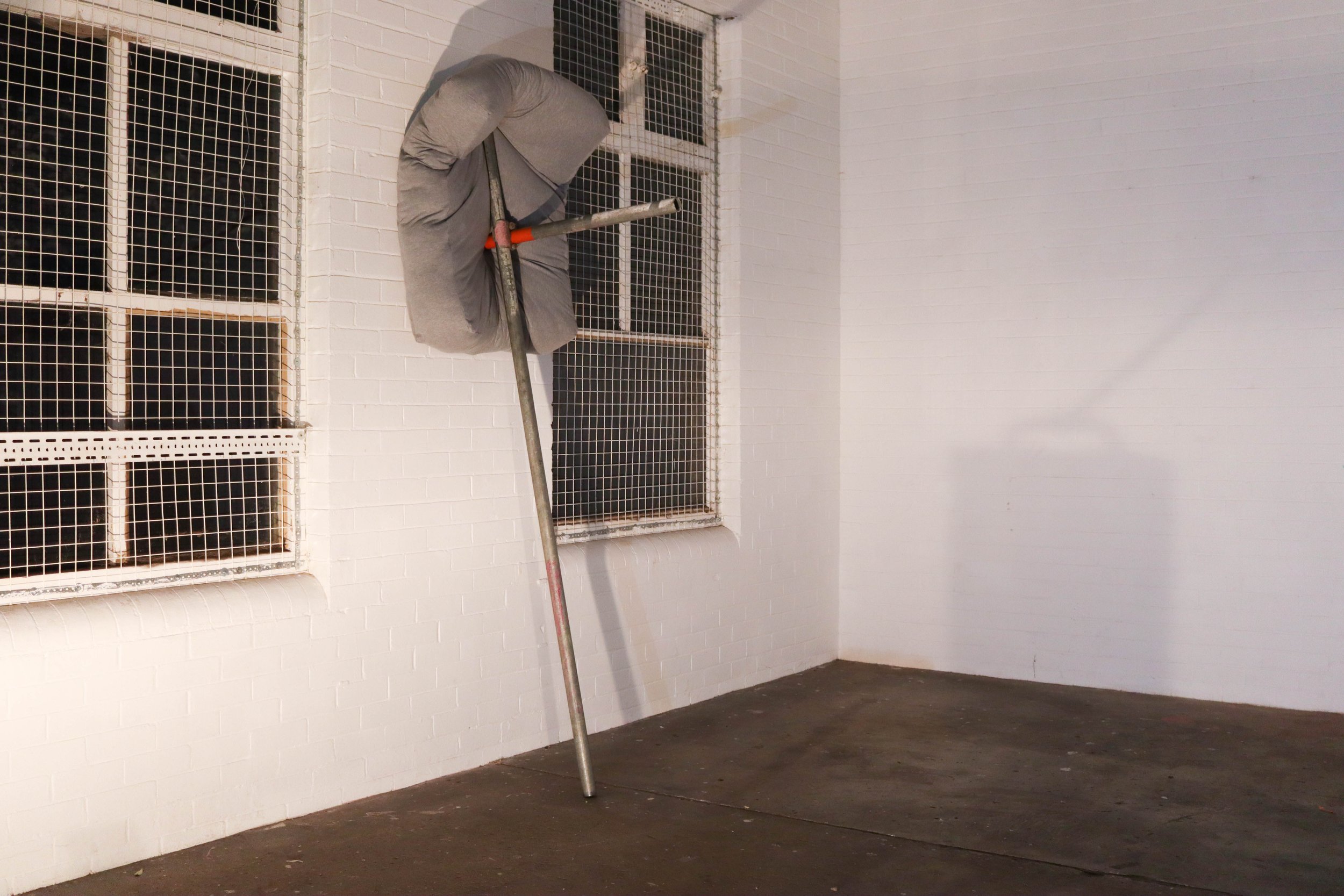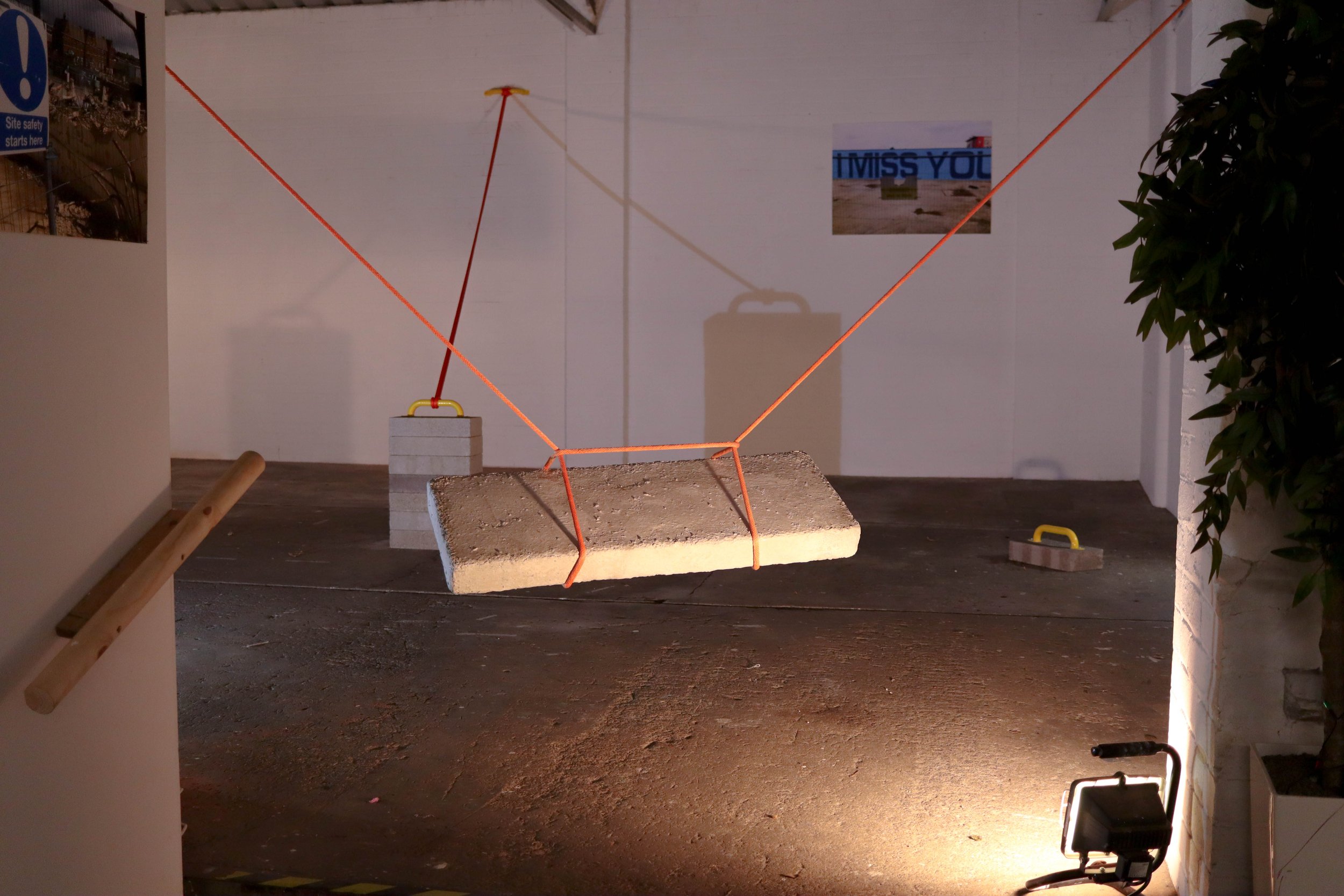Connor Shields: Can You Spot Me Real Quick?
25th November 2021 - 27th November 2021
Assembly House
Leeds
Connor Shields has been on the Afterview radar since he exhibited with Left Bank Leeds back in 2018. Subsequently, Shields has gone on to take part in residencies at Yorkshire Sculpture Park and Patrick Studios, and has exhibited across the UK at places such as Pineapple Black Gallery (Middlesbrough), Sunny Bank Mills (Leeds). Garnering such support and achieving such successes, points towards an artist establishing an identity whose prescience has rightly captured the attention of some of the most influential platforms in the northern art scene. Hosted at Assembly House, Leeds, his Latest and, third solo exhibition to date, “Can You Spot Me Real Quick?” brings together works made over the past two years.
The show immediately signals a progression in Shields’ practice. Having an entire space to himself allows for its full utilisation and integration into the themes of the show. Shields illuminates it with a number of portable flood lights, situated in the peripheries and affixed to walls at low levels. This new addition works in a number of ways, in one instance it brings to attention the space itself; the old red bricked Victorian textiles mill that is Assembly House becomes an immersive space, synonymous with the working class, traditional gender roles and industrial materials. Such associations, which preoccupy much of Shields’ work are used to encapsulate the inhabiting sculptures. At times the lighting also adds a sense of intimacy, an approach that draws one closer into the work. However, the lights also have a duel role by casting certain works into the fore, spot lighting them, accentuating them and imbuing them with an incongruity which is at odds with the aforementioned intimacy. This is in and of itself, a key aspect to “Can You Spot Me Real Quick?”, as the traditionally non-masculine elements of the show are, on occasion, put under hostile scrutiny; situated as they are, in the stereo typical masculine environment and it’s ever present vigil.
Take for example “Manhandle” (pictured below), it exemplifies many of the key traits found in Shields’ work. The abrupt energetic yellow is contrasted by the cold muted grey; demonstrative of the many conflicts in his use of materials. As too is the heavy mass and coarse permeable surface of the breeze block, which is a counterpoint to the hermetic smooth veneer of the handle. The yellow appendage provides and unnecessary aid to the weightiness of the block in an overtly comical way (the double meaning of the title also reinforces this playfulness). Putting the two together creates an almost unified object, changing the inherit masculinity one might initially associate with the breeze block. Cast directly under the luminous gaze of a labourer’s flood light, the work evokes a sense of what it must feel like to be an “other” in a homogenised world; a need and an inalienable right to be seen as one is, supplemented with all the feelings of conspicuousness that this must bring. The ambiguity of the piece is deepened even more when one considers other contradictions on offer. Such as the vulnerability in loneliness captured by the piece, versus the pride and defiance of the upright irrepressible yellow, made more durable and resilient than the porous concrete, on which it stands with its impervious sheen.
“Kiss Me Again” (pictured below) stands on the fringes of the pooled lights, cloaked in shadow it demurely avoids the harsher glares of surveillance. Again, it comprises of binary materials, this time two intersecting scaffolding poles pin a soft grey cushion against the wall. The work is made noticeable by its comparable lack of colour and, with another gesture of defiance it is lifted into prominence by its high stature. The consensual title conveys an intimate act of passion, performed as it is, up against a grungy urban wall by two incompatible or disparate forms. It speaks of those spaces out of sight, which are perhaps sought out for deeds unwelcomed in ultra-masculine spaces, the kinds of acts that might provoke unwanted attention. There is a toing and froing present in this piece, between an instinct to withdraw from view and the liberation found in an unbridled act of desire. This sense of toing and froing rings true in all the pieces on show and is suggestive of an inability to stay fixed; instability is indicated at in most of the works.
The work most emblematic of the ideas at the heart of the exhibition is the titular piece, “Can you Spot Me Real Quick?” (pictured right). It acts as a barrier to the exhibition space, as two red ropes suspend a slab of concrete in mid-air. Viewers have to circumvent the anchored grey pendulum to enter the show and in doing so, are forced to interact with the work and space alike. Shields decodes the title by explaining:
“The title of the show is a gym phrase. It's somewhat of a protective gesture, asking someone to 'spot', or look out for, you while you're operating a potentially heavy and dangerous piece of gym equipment. I liked this title as a casual gesture of protection.”
This is the crux of the exhibition; the works are practically a performance or an action, take one element away and the other falls. It makes one think of the performative nature of gender. Animated by the fact that everything is so precarious, teetering on the cusp of falling, the only thing from stopping it from doing so, is the careful coupling of reliant material relationships. In each of the works, two objects create a near singular form which blurs the lines between the dualities. By extension the entrenched roles of gender, sexuality, identity and their innate associations become unclear or unsecured, but at the same time united, empowered and immutable, situated as they are, under the observation of the ultra-masculine.
One aspect of Shields’ work which has always been so striking and is equalled in these latest works, is his eye for design. Everything is precise, considered and crafted with a graphical sensibility; from the grey colours of steel, concrete and breeze blocks, to the minimal use of bright stripes of colour. Even the knots that bind work together have been attended to with acute attention to aesthetic detail. Done so with a restraint of the artist’s hand, it allows for the materials to speak for themselves. It also makes his works so photogenic, they have a poise and a posture demonstrative of an artist that is fully in command of his craft. It makes viewers take note, admire their formal qualities and in turn, take the time to consider the thoughtful interrogation of the materials on display.
Much can be said of the setting of Assembly House, the lineage of industry, the status of class and other sociological underpinnings, all of which feed into the themes Shields so expertly explores. However, one cannot ignore the artistic lineage from which his work emanates; the found object and minimalist movements that originated in the 20th Century, initiated by Marcel Duchamp and continued in the artworks by the likes of Joseph Beuys and Carl Andre. Shields’ ability to identify objects of the everyday, which are heavily loaded with ideologies and concepts, is not dissimilar to his predecessors. However, there are clear differences and it is the differences that exist which are so deeply significant. Andre’s famous 120 bricks, “Equivalent VIII” (1966), highlighted the utilitarian qualities of bricks, working class honour, subverted the historic use of traditional sculptural materials and acted to define the space it was situated. Such artists and such works, exemplified modern arts drive for progressivism; a challenging of old ideas as a means to bring forth new ones. The different between such artworks and Shields work, is that he draws from the materials, artists and spaces of the 20th Century but challenges the out dated machismo it was undeniably steeped in, creating work which tackles concerns of the 21st Century with admirable assurance.
Over the past few years Assembly House has become one of the leaders in the Leeds art scene. By creating a programme dedicated to platforming voices of emerging artists and bringing community issues into view, they continue to push the tenets of modern art with contemporaneous significance. Much like Shields’ coupling of materials, Assembly House has coupled with an artist so deft in probing materials, aesthetics and in the case of this latest exhibition, environmental associations, it has resulted in a re-defining of the space itself. With that in mind one is reminded of the often cited Joseph Bueys statement; “society is a large social sculpture, that can be adapted at will”.
Author: Afterview
Photographs curtesy of: Connor Shields



